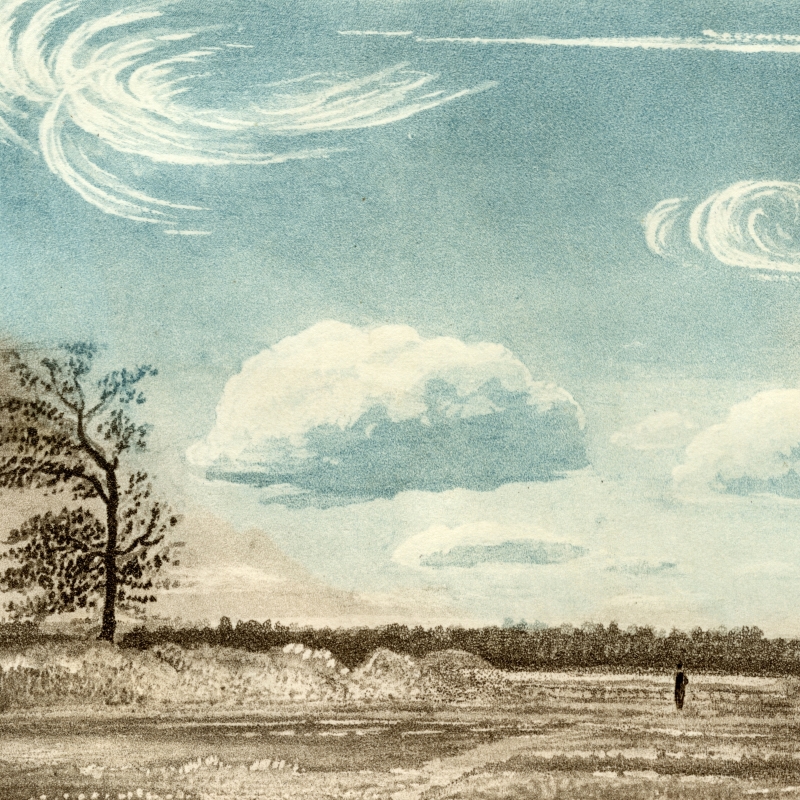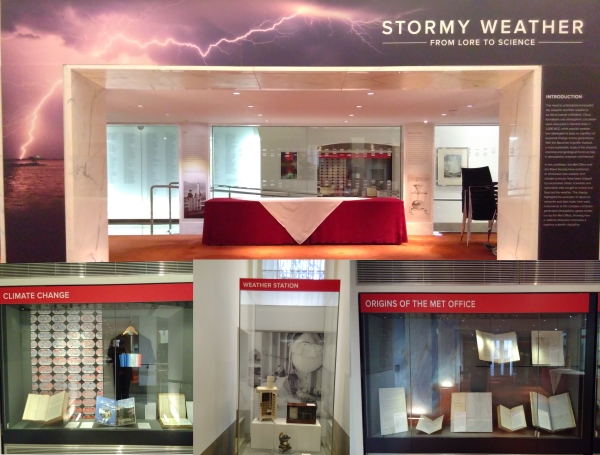Louisiane Ferlier reports on a joint Royal Society - Met Office exhibition on the science of weather and climate in Britain, and shows how going online has given it a second lease of life during lockdown.

In late February 2020, we partnered with the Met Office Library and Archives to unveil an exhibition at Carlton House Terrace entitled Stormy Weather: from lore to science. The display showcased material from both historical collections to trace the evolution of the science of weather and climate in Britain. The exhibition was the culmination of discussions with the Met Office archivist, Dr Catherine Ross, about the deep connections running between our collections.
For instance, the creation in 1854 of an office at the Board of Trade in charge of forecasting marine weather was discussed throughout the Royal Society. Robert FitzRoy, its first chief, was a Fellow himself and came with the recommendation of the Society’s then President, the astronomer Lord Wrottesley. Since then, many notable Met Office scientists have been elected to our Fellowship.

A variety of objects (archives, meteorological instruments, computer parts, books and imagery) were displayed in six themed cases, highlighting the evolution of observer networks and their tools. From early instruments to the complex computer-generated atmospheric global model run by the Met Office, they showed how a national obsession motivates a rigorous scientific discipline. We were delighted to open the exhibit for public display in February 2020, and aimed to punctuate the six-month display with various events for current scientists and the general public. In particular, the exhibit was to feature in the programme of the Royal Society Summer Science Exhibition.
Like all public galleries, museums, libraries and archives in Britain, in March 2020, the Covid-19 pandemic forced us to close the exhibition to the public. We had already planned to accompany the physical display with digital stories to make it available beyond London, but the closure of public spaces meant that going digital was our only option to share our work until reopening.
As a result, a few weeks ago, we launched six stories on the Google Arts & Culture platform:
Weather Lore
Early Science of the Weather
Meteorological Observations
A Citizen Science
Numerical Weather Prediction and Supercomputers
Foundations of the Met Office - which you can discover here:
The stories are not a digital reproduction of the physical display: we included different items, followed different narratives and made use of the immersive layout to guide viewers in detail through the material. Of course, the absence of 3D recreation means that instruments, for instance, figure less prominently than in our physical exhibit.
Curating digital resources in a collaborative manner can be a difficult exercise with access restrictions and system incompatibilities tending to slow things down. The Google Art & Culture partnership offered us a secure online platform with full remote access for our Met Office collaborators. This meant that both Catherine Ross and I could add new items, describe them and curate the stories at a distance. As for physical exhibits, the idea that you can simply ‘build’ digital resources and that ‘the public will come’ is as realistic as Field of Dreams, the corny baseball movie which gave us this silly motto. We therefore gave an exclusive preview of the digital exhibits as part of the Global Digital History of Science Festival organised by the British Society for the History of Science (catch up with our panel discussion), and launched the stories themselves during Summer Science Online. Both events saw great engagement with our content, created opportunities for other collections and historians to reach out, and resulted in high numbers of online visitors.
We do eventually plan to reopen our physical Stormy Weather exhibit, but in the meantime I think that the Covid pandemic is creating a moment for digital events – a moment which we should seize as an opportunity to reach a public that may otherwise be unable to connect physically with our collections. The global reach of the BSHS Digital Festival and Summer Science Online serves hopefully as proof of this widening audience. The accessibility of the platforms we use then holds the key for us to share our content with as many people as possible. There are fascinating challenges for digital resources ahead, and our success with Stormy Weather makes me hopeful that digital tools can give us a new and exciting way to be more collaborative, more open and more transparent in a digital future.







